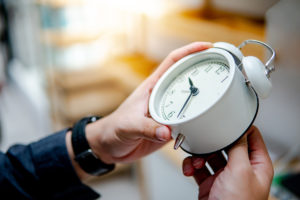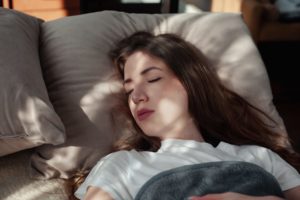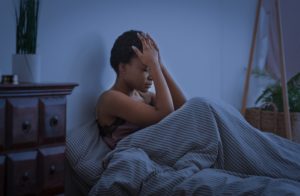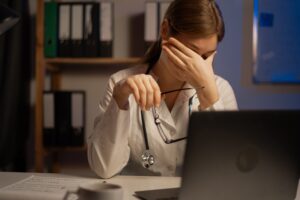Daylight Saving Time: Everything You Need to Know
Daylight Saving Time (DST) is the yearly practice of setting clocks forward one hour between the months of March and November. The non-DST period between November and March is known as standard time.
The idea behind DST is to adjust our clocks so that there is more daylight in the evening. In this way, DST is seen as a way to “save” natural light.
Most of the United States has officially observed DST since 1966. Hawaii, certain areas of Arizona, and the U.S. territories of American Samoa, Guam, the Northern Mariana Islands, and the U.S. Virgin Islands do not practice DST.
For the start of DST, we set our clocks forward one hour at 2 a.m. on the second Sunday in March, which often results in one less hour of sleep that night. Then, at 2 a.m. on the first Sunday in November (in 2024, that’s November 3), we set our clocks back one hour. DST is often referred to as “Spring Forward, Fall Backward” because of when these time changes occur.
Adjusting the time by one hour may not seem like too drastic a change, but sleep experts have noted troubling trends that occur during the transition between Standard Time and DST, particularly in March. These issues include upticks in heart problems, mood disorders, and motor vehicle collisions. Furthermore, DST can cause sleep problems when it disrupts circadian rhythms so that they are not aligned with natural cycles of light and darkness. Some people also experience insomnia symptoms around the spring time changes.
How Daylight Saving Time Affects Sleep
Humans and other mammals are guided by circadian rhythms, which are 24-hour cycles that regulate sleep and other key bodily functions such as appetite and mood. These rhythms are largely dependent on light exposure, synchronizing with natural light-darkness cycles to promote healthy, high-quality sleep.
Transitioning twice a year between standard time and daylight saving time changes the hours when we are exposed to natural light. This can interfere with your sleep-wake cycle and may throw off your ability to feel alert in the morning and sleepy at night.
In this way, circadian misalignment can contribute to sleep loss and sleep debt, which refers to the cumulative effect of not getting enough sleep over a period of days or weeks.
Humans are most vulnerable to sleep loss during the spring clock change. One study found that the average person receives 40 minutes less sleep on the Monday after “springing forward.”
In addition to sleep loss, studies have found that people are at greater risk of mood disturbance, suicide, and being involved in traffic accidents during both bi-annual clock changes. That said, daylight saving time may reduce some traffic accidents as more people drive home from work in daylight.
Major sleep disruptions are less likely to occur in November when daylight saving time ends. In fact, some people get an extra hour of sleep from “falling back.” However, some people have difficulty adjusting to a new wake-up time.
For most people, the effects of springing forward or falling back gradually subside over a few days or weeks. But some studies suggest that certain people never fully acclimate to clock changes and daylight saving time. For them, circadian misalignment may become a chronic condition. This can lead to more serious health problems, especially for those who have to cut sleep short because of work or school.

Should We Ditch Daylight Saving Time?
Many sleep experts advocate for abandoning the system altogether in favor of single, year-round time. They argue that permanent standard time better suits circadian rhythms and would benefit public health and safety.
On the other side of the argument, people in favor of daylight saving time argue that it decreases energy consumption, reduces car accidents, and facilitates more commerce and after-work activity. They also cite evidence that crime rates decrease when daylight saving time is in effect.
For now, federal law prohibits the adoption of permanent daylight saving time in the United States. States can use permanent standard time, but only a few states, including Hawaii and Arizona, actually do so.
In recent years, legislation has been introduced in Congress to authorize states to adopt permanent daylight saving time. But no bills have been passed, and there are no indications that federal legislative change is imminent.
Many state legislatures have passed laws that would observe permanent daylight saving time contingent upon a change in federal laws. Clock changes continue to be a matter of debate at the state level, but unless federal regulations change, the effect of state action is limited.
Daylight Saving Time Sleep Tips
In the days and weeks leading up to clock changes, various tips can help limit negative impacts on your sleep.
- Avoid Alcohol Before Bed: While alcohol can cause sleepiness, it causes sleep disruptions and lowers sleep quality.
- Establish a Consistent Sleep Routine: Going to bed and waking up at the same time each day – including the weekends – can promote more consistent sleep before and after changes between standard time and daylight saving time.
- Gradually Alter Your Bedtime: Two to three days before the transition to DST in early March, it may help to wake up 15 to 20 minutes earlier than usual. Adjusting your sleep schedule in advance may help you have a smoother transition to DST.
- Spend Time Outdoors: Since natural light is a driving force behind our circadian rhythms, exposure to sunlight can alleviate feelings of tiredness in the morning. Natural light can also help reorient your circadian rhythm to minimize sleep disruptions.
- Nap in Moderation: If you feel sleepy, a short nap may give you a boost of energy. These naps should last for 20 minutes or less to avoid waking up groggy.
- Don’t Consume Caffeine Too Close to Bedtime: Caffeine consumed in the afternoon can throw off your sleep. To prevent problems, be mindful of when and how much caffeine you consume.

Still have questions? Ask our community!
Join our Sleep Care Community — a trusted hub of sleep health professionals, product specialists, and people just like you. Whether you need expert sleep advice for your insomnia or you’re searching for the perfect mattress, we’ve got you covered. Get personalized guidance from the experts who know sleep best.
References
8 Sources
-
Rishi MA, Ahmed O, Barrantes Perez JH, et al. Daylight saving time: an American Academy of Sleep Medicine position statement. J Clin Sleep Med. 2020;16(10):1781–1784.
https://jcsm.aasm.org/doi/10.5664/jcsm.8780 -
Bryner, J. (2020, March 5). Daylight saving time 2020: When we change our clocks and why. Live Science.
https://www.livescience.com/56048-daylight-saving-time-guide.html -
National Conference of State Legislatures. (2022, February 22). Daylight saving time: State legislation.
https://www.ncsl.org/transportation/daylight-saving-time-state-legislation -
American Academy of Sleep Medicine (AASM). (2014, March 3). Saving daylight, losing sleep: Insomnia Awareness Day is March 10. American Academy of Sleep Medicine – Association for Sleep Clinicians and Researchers.
https://aasm.org/saving-daylight-losing-sleep-insomnia-awareness-day-is-march-10/ -
Barnes, C. M., & Wagner, D. T. (2009). Changing to daylight saving time cuts into sleep and increases workplace injuries. The Journal of applied psychology, 94(5), 1305–1317.
http://doi.apa.org/getdoi.cfm?doi=10.1037/a0015320 -
Monk, T.H., Aplin, A.C. (1980). Spring and autumn daylight saving time changes: studies of adjustment in sleep timings, mood, and efficiency. Ergonomics, 23(2), 167-78.
https://pubmed.ncbi.nlm.nih.gov/7398616/ -
Doleac, J. L., & Sanders, N. (2015, December 8). Under the Cover of Darkness: How Ambient Light Influences Criminal Activity.
https://www.mitpressjournals.org/doi/abs/10.1162/REST_a_00547 -
American Academy of Sleep Medicine. (2016, March 3). Health Advisory: Daylight Saving Time [Press release].
https://j2vjt3dnbra3ps7ll1clb4q2-wpengine.netdna-ssl.com/wp-content/uploads/2017/10/daylight-saving-time-sleep-health-advisory.pdf

















